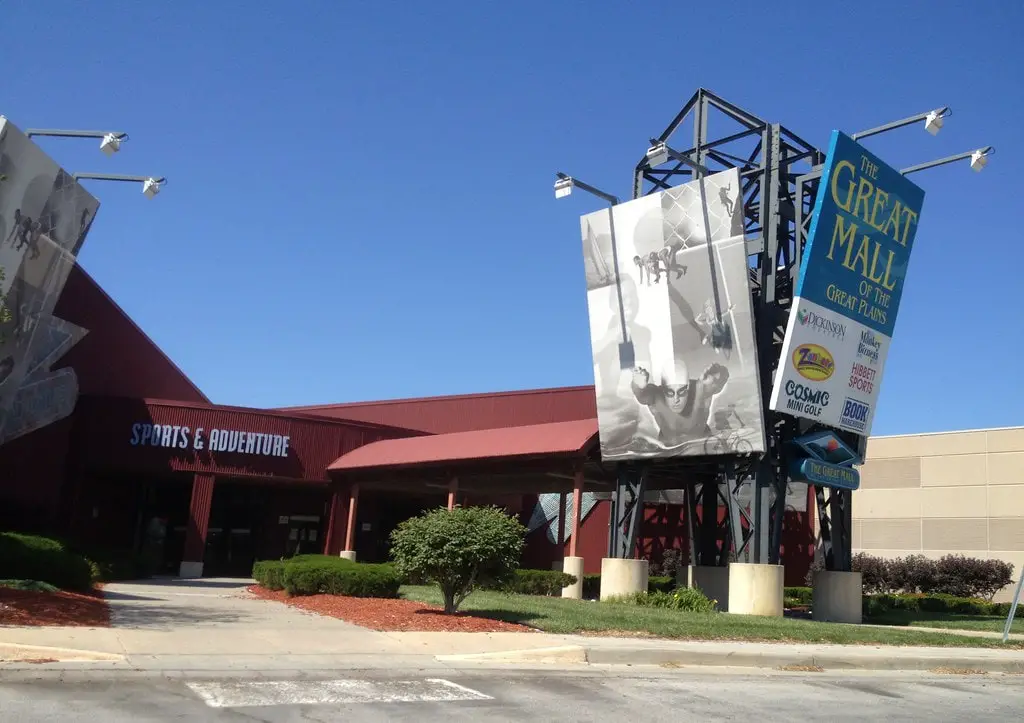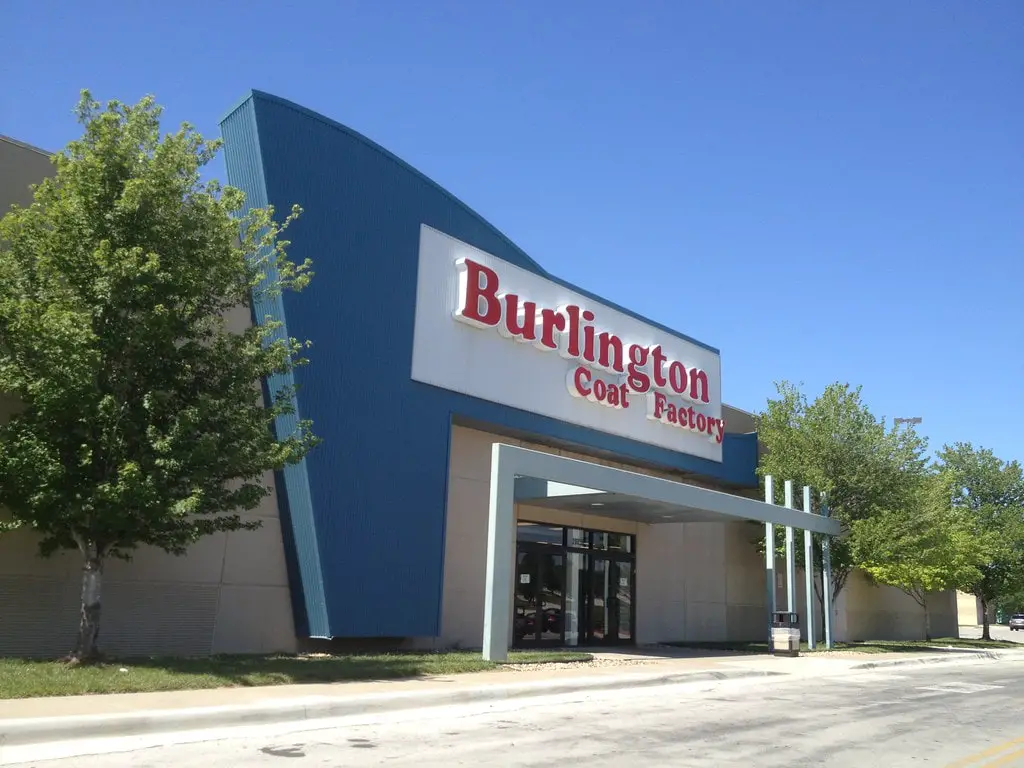Story of The Great Mall of the Great Plains
In the bustling city of Olathe, Kansas, a remarkable symbol of commercial success and architectural ingenuity once stood: The Great Mall of the Great Plains.
Opening its doors on August 14, 1997, this megastructure was not just a shopping destination but a marvel in retail and design.
With over 150 stores, it sprawled across an impressive 783,000 square feet, distinguished by a half-mile racetrack layout that made shopping an effortless and enjoyable experience.
This retail haven quickly became a central hub for things to do in Olathe, Kansas, attracting over 1.5 million visitors in its initial phase. It was a place where families and friends congregated, not only for shopping but for a complete entertainment experience.
The mall housed a variety of attractions, including a 12-restaurant Marketplace food court, a 16-screen movie theater, and a family entertainment center, cementing its status as a landmark in the Kansas retail landscape.
The Birth of The Great Mall of the Great Plains
In the mid-1990s, a grand vision for a new shopping experience began taking shape in Olathe, Kansas.
The concept was ambitious: a value-oriented megamall that would house a unique mix of retail outlets, big-box stores, and entertainment options.
This vision was brought to life by the joint efforts of Jordan Robert Perlmutter & Co. and Glimcher Realty Trust.
Inspired by the trend of large-scale, entertainment-driven shopping centers, they set out to create a destination that was more than just a place to shop; it was an experience in itself.
The construction of the Great Mall of the Great Plains began in 1996, signaling the start of what would become a significant development in Kansas’ retail landscape.
The mall was initially slated to open in March 1997 but faced delays due to leasing issues with several tenants.
Despite these initial hurdles, the mall finally opened on August 14, 1997, unveiling a sprawling complex that would soon become a landmark.
On opening day, the Great Mall of the Great Plains presented diverse offerings to its visitors. With 150 stores, including 11 anchor stores such as Dillard’s, DSW, Burlington Coat Factory, Marshalls, and Old Navy, the mall was set to redefine the shopping experience in Kansas.
The mall also featured a Jeepers family entertainment center, which would later become Zonkers in 2007, adding to its appeal as a family-friendly destination.
This array of stores and entertainment options, organized into themed courts, promised something for everyone, making the Great Mall of the Great Plains a go-to destination in Olathe.
The Golden Years of The Great Mall of the Great Plains
The early years following the opening of the Great Mall of the Great Plains were marked by tremendous success and popularity.
Its innovative layout set the Great Mall of the Great Plains apart during its golden years. The mall was divided into four theme courts: Home and Hobby, Fashion, Techtainment, and Sports and Adventure.
This unique arrangement allowed shoppers to quickly find the types of stores they were interested in and encouraged exploration.
The thematic division of the mall not only enhanced the shopping experience but made it a fun and engaging place for visitors to spend their time.
In addition to the shopping experience, the Great Mall of the Great Plains offered a range of dining and entertainment options.
Its 12-restaurant Marketplace food court provided a variety of culinary choices, while the 16-screen Dickinson theater offered a cinematic escape.
The family entertainment center, initially Jeepers and later Zonkers, added to the mall’s appeal as a family-friendly destination.
These elements combined to make the Great Mall of the Great Plains a vibrant hub of activity and enjoyment, contributing to its status as a landmark in the Kansas retail scene.

Challenges and Decline of The Great Mall of the Great Plains
As the new millennium approached, the retail landscape shifted dramatically, posing significant challenges for the Great Mall of the Great Plains.
The once-bustling center started to experience a decline in both occupancy and foot traffic. This downturn was partly due to the evolving consumer preferences and the increasing competition in the retail sector.
Several key anchor stores, vital to the mall’s allure, began to close or relocate. Notable departures included Kitchen and Co., DSW, Dillard’s, and Old Navy. These closures significantly impacted the mall’s ability to attract and retain visitors.
In response to these challenges, the mall management initiated several strategies to rejuvenate the space and increase foot traffic.
This included the novel idea of hosting an alternative high school within the mall premises. New entertainment options like Cosmic Mini Golf enhanced the mall’s appeal.
Despite these efforts, the decline continued, with the mall struggling to fill the void left by departing retailers and to maintain its position as a premier shopping destination.
By 2015, the situation had become critical. The occupancy rate had dwindled to around 35%, leading to the eventual closure of the mall in September of that year.
The decline of the Great Mall of the Great Plains serves as a stark reminder of the volatile nature of the retail industry and the challenges large shopping centers face in adapting to changing market conditions and consumer behaviors.

Several anchor stores closed or relocated, contributing to the mall’s decline:
- Kitchen and Co. (closed November 1998)
- DSW (announced closure in 1999, closed in 2007)
- Dillard’s (closed 2001)
- Oshman’s SuperSports USA (closed January 2003)
- Old Navy (closed January 2003)
- Off Fifth Saks Fifth Avenue Outlet (closed February 2004)
- Linens ‘N Things (closed 2004)
- Marshalls (relocated in 2005)
- Steve & Barry’s (closed in early 2009)
- VF Outlet (closed 2009)
- Famous Labels (closed 2009)
The Closure and Demolition of The Great Mall of the Great Plains
The end of an era for the Great Mall of the Great Plains was marked by the announcement of its closure on September 18, 2015.
The mall, once a bustling hub of activity and commerce, had seen better days, and its closure reflected the broader challenges faced by traditional retail spaces in an evolving market.
Dismantling this once-iconic structure began on July 11, 2016. The demolition work was significant, given the mall’s vast size and complexity.
By January 2017, the mall was demolished, except for the Burlington Coat Factory store, which remained operational until its eventual closure in January 2023.
The demolition of the Great Mall of the Great Plains was not just the removal of a physical structure but also the fading of a landmark that had been integral to the community’s social and economic fabric.
The site symbolized change and transition after the mall’s demolition. Removing the mall’s structure left a void in Olathe’s landscape, both physically and metaphorically.
It marked the end of a significant chapter in the city’s retail history and opened the door for new developments and opportunities.
Redevelopment Efforts and Future Prospects
Following the demolition of the Great Mall of the Great Plains, various redevelopment plans were proposed to breathe new life into the site.
Ambitious plans emerged to transform the area into a vibrant town center. This project envisioned a multi-seat arena, interactive golf and rock climbing facilities, an ice rink, and a mix of stores, restaurants, office spaces, and hotels.
However, like many that followed, these plans faced challenges and ultimately did not materialize.
Another significant redevelopment attempt was the Mentum project, announced in 2018. This project, too, was envisioned as a transformative development for the site, promising a fresh start and new opportunities.
Despite the initial excitement, the Mentum project suffered a similar fate to its predecessors and was not realized.
In October 2021, a new chapter began for the site with Garmin Ltd., an Olathe-based company, acquiring the property.
This acquisition marked a significant shift in the site’s future, steering it away from retail and entertainment towards corporate development.
Garmin’s plans to expand its headquarters on the site signaled a new direction and potential for growth and development in the area.
While the Great Mall of the Great Plains has become a part of Olathe’s history, its legacy continues to influence the city’s landscape and development trajectory.

Reflecting on the Legacy of The Great Mall of the Great Plains
As we look back on the story of The Great Mall of the Great Plains, it’s clear that its journey from a bustling retail hub to a piece of history reflects the broader changes in the retail industry and consumer habits.
Its rise, decline, and eventual transformation highlight the dynamic nature of commercial spaces and their impact on communities.
Today, the site’s future under Garmin Ltd. opens new possibilities for Olathe, promising growth and innovation.
The Great Mall of the Great Plains, in its vibrant past and evolving legacy, remains a significant chapter in Olathe’s story, embodying the challenges and resilience of the retail sector.
Spring for a Getaway: Save 40% or more on hotels!

The Mall of America in Bloomington MN is in an established suburb with buses and light rail services. The Great Mall lacked this service. You had to have a car to get to it.
Access to public transportation can indeed make a big difference in terms of accessibility and convenience when it comes to shopping centers. In the case of the Great Mall of the Great Plains in Olathe, KS, it sounds like having a car was necessary for getting to the mall.
This was a wonderful article! I’ve been fascinated with this mall for a long time because of the concept that worked so many other places not working in KC. However I would like to make an adjustment: DSW did announce that they’d close in 1999, but decided to ride out their lease until 2007 once Saks OFF 5TH announced they’d open in the former Kitchen & Co.
Thanks for your comment. It’s always intriguing to delve into why certain concepts work in some places but not others. Your additional information about DSW and Saks OFF 5TH adds another layer to this story.